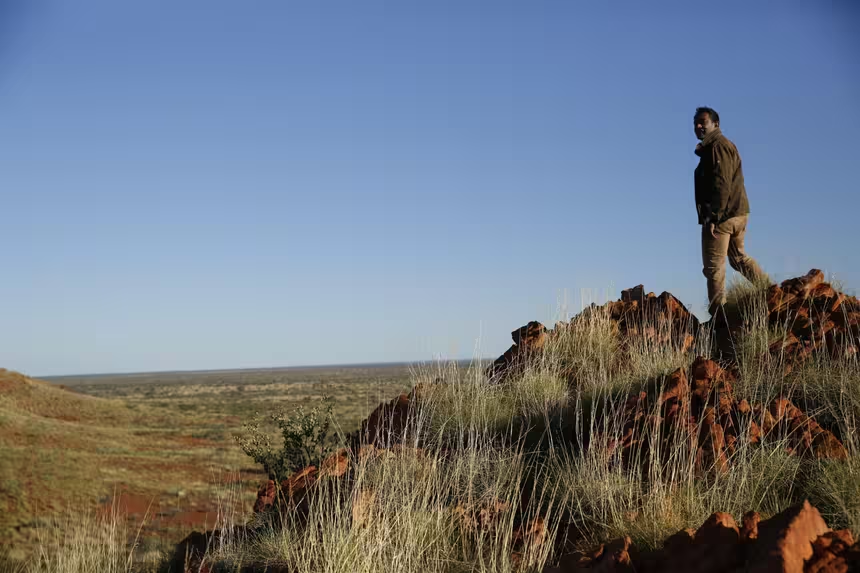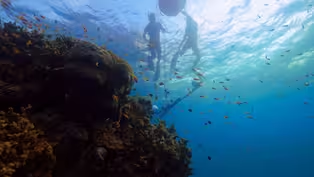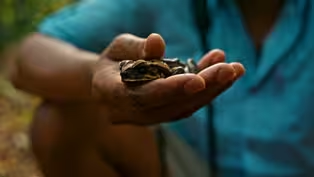
Monitoring Muskoxen Births in Arctic Greenland
Clip: Season 2 Episode 2 | 3m 3sVideo has Closed Captions
Dr. Niels Martin Schmidt's team are monitoring muskoxen in the frozen northeast.
Dr. Niels Martin Schmidt's team are monitoring muskoxen in northeast Greenland. Muskoxen are in serious decline and they play a key role in the health of the Arctic tundra and its ability to capture carbon.
Problems playing video? | Closed Captioning Feedback
Problems playing video? | Closed Captioning Feedback

Monitoring Muskoxen Births in Arctic Greenland
Clip: Season 2 Episode 2 | 3m 3sVideo has Closed Captions
Dr. Niels Martin Schmidt's team are monitoring muskoxen in northeast Greenland. Muskoxen are in serious decline and they play a key role in the health of the Arctic tundra and its ability to capture carbon.
Problems playing video? | Closed Captioning Feedback
How to Watch Changing Planet
Changing Planet is available to stream on pbs.org and the free PBS App, available on iPhone, Apple TV, Android TV, Android smartphones, Amazon Fire TV, Amazon Fire Tablet, Roku, Samsung Smart TV, and Vizio.

Dr. M. Sanjayan On Our Climate Future
Dr. M. Sanjayan discusses how he stays optimistic about our climate future, our role in climate change, his climate heroes, and more.Providing Support for PBS.org
Learn Moreabout PBS online sponsorshipMuskoxen are the largest herbivores here, playing a key role in the health of the tundra.
They graze on small, productive pastures and then empty their bowels on drier areas.
Thus, their movement transports nutrients uphill, expanding plant communities.
Not only that, their grazing could make the tundra more efficient at taking carbon from the atmosphere.
“Carbon capture is very much influenced by ” “animal grazing.
” “So every time an animal walks ” “into an area and starts to graze, ” “the plant will respond by regrowing.
” “So that will increase the uptake of carbon.
” Sadly, here their population is currently in decline.
So Niels's research is focused on females and their young.
In order for the team to get up close.
The animal must be sedated.
“The dart is in the female.
” “The cow is down.
” She may look like a cow, but she's more closely related to sheep and goats.
It's a race against time to collect as much data as possible.
The muskoxen gene pool is tiny, making them highly vulnerable to new diseases.
In Arctic Canada the muskoxen have experienced serious decline, losing 50% of their population in a decade.
With warmer temperatures, diseases are moving north, exposing those animals to new pathogens against which they are less resilient.
“What we basically can do is to understand ” “the full extent of the role ” “the muskoxen play in an ecosystem ” “and it's not just climate impacting ” “muskoxen, its all interlinked.
” The final job is to insert a vaginal implant transmitter.
“Samos is inserting ” “this vaginal transmitter ” “that will give a signal once ” “she gives birth.
” “If she gives birth.
” With this clever gadget, the scientists will know exactly where and when a newborn arrives.
“What we're going to do now ” “is going to get some medication ” “that's going to reverse the anesthetic.
”
Listening In On the Ocean's Orchestra
Video has Closed Captions
Clip: S2 Ep2 | 2m 13s | Professor Steve Simpson monitors the sounds of biodiversity on reefs in the Maldives. (2m 13s)
The Troublesome Cane Toad Invasion In Australia
Video has Closed Captions
Clip: S2 Ep2 | 2m 30s | M. Sanjayan investigates the biodiversity around Cairns Airport and meets the cane toad. (2m 30s)
Providing Support for PBS.org
Learn Moreabout PBS online sponsorshipSupport for PBS provided by:













